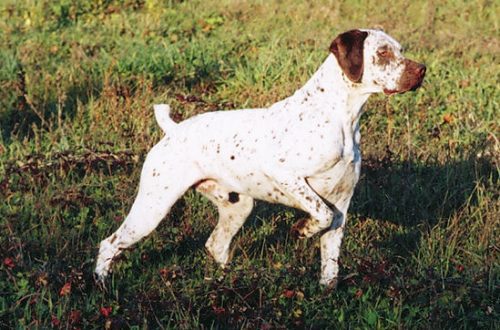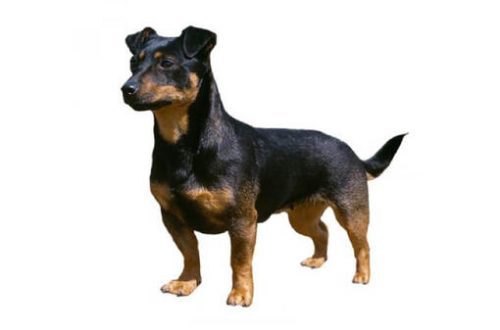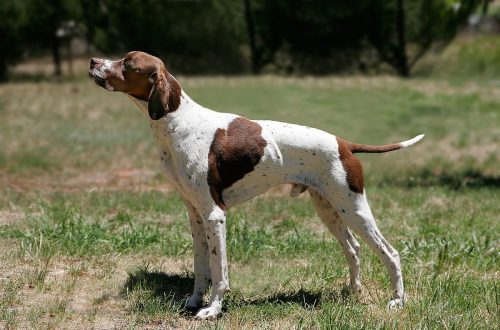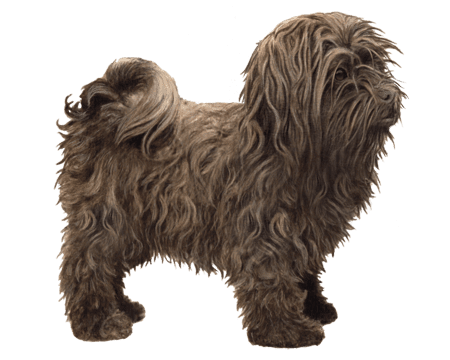
Russian Tsvetnaya Bolonka
Other names: RTB , colored lapdog
The Russian Tsvetnaya Bolonka is a Russian breed of decorative curly-haired companion dogs, bred in the middle of the 20th century by Leningrad specialists.
Contents
- Characteristics of Russian Tsvetnaya Bolonka
- Basic moments
- History of the Russian Tsvetnaya Bolonka breed
- Breed Standard Russian Tsvetnaya Bolonka
- The nature of the Russian colored lapdog
- Education and training
- Maintenance and care of Russian Tsvetnaya Bolonka
- Health and disease of Russian colored lapdogs
- How to choose a puppy
- The price of the Russian colored lapdog
Characteristics of Russian Tsvetnaya Bolonka
| Country of origin | Russia |
| The size | Miniature |
| Growth | 20–25 cm |
| Weight | 2–2.5 kg |
| Age | 9–11 years old |
| FCI breed group | Not recognized |
Basic moments
- The Russian Tsvetnaya Bolonka is registered by the RKF, but has not yet received recognition from the FCI (Federation Cynologique Internationale).
- The ancestor of the breed is considered to be a lap dog named Liu-Lu, which belonged to the Soviet cynologist Yu. M. Zvonareva.
- In Russia, these curly cute dogs are often called tsvetnushki.
- In recent years, there has been a departure from the traditional breeding standards of the breed, so it is becoming increasingly difficult to find a flower bed with a “Soviet” exterior from breeders.
- The breed does not have an obstinate character, it is easy to educate and manage, therefore it is suitable for the maintenance of older people, as well as inexperienced owners who are not ready to spend a lot of time walking a pet.
- The RZBs are not shrill and strain their vocal cords only in exceptional cases, when they are outraged to the core.
- The breed will fit perfectly into the lifestyle of people who love joint travel with pets. Even in public transport, Russian colored lapdogs behave neatly and delicately.
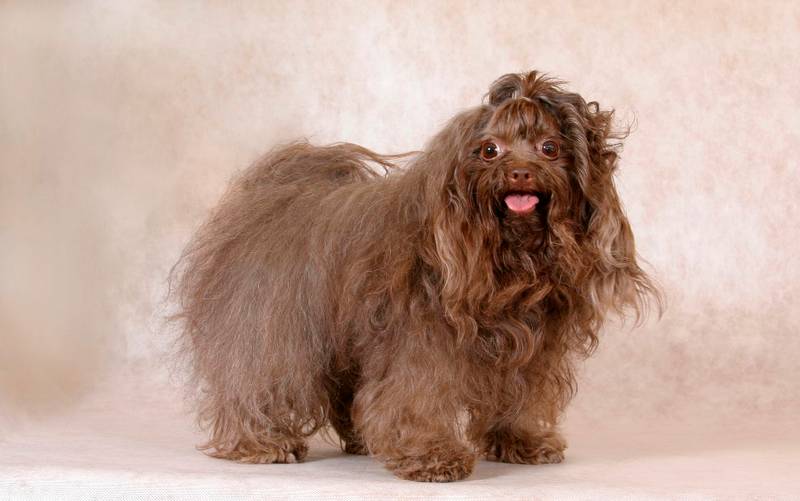
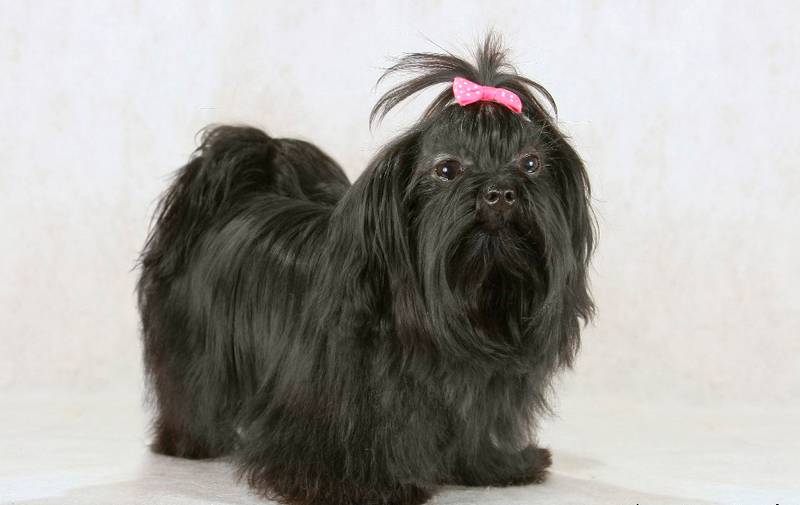
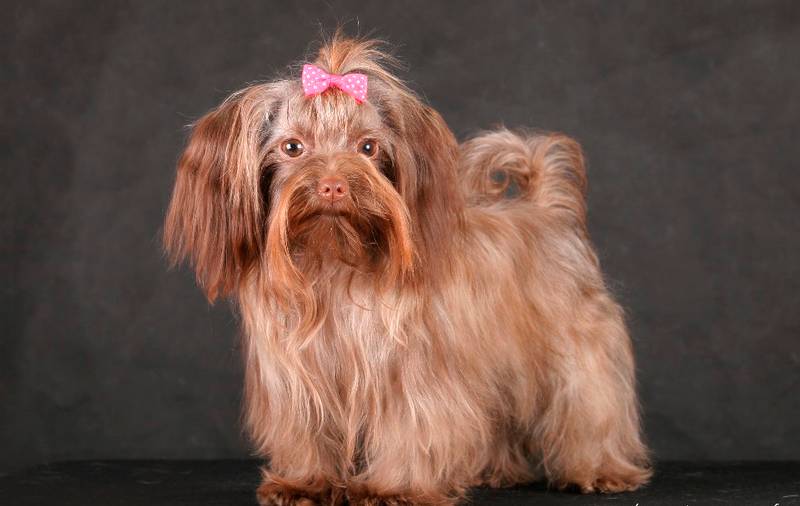
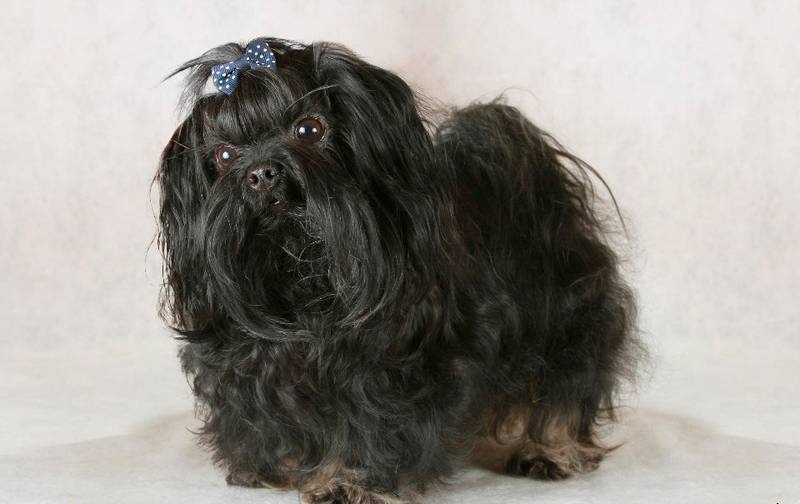
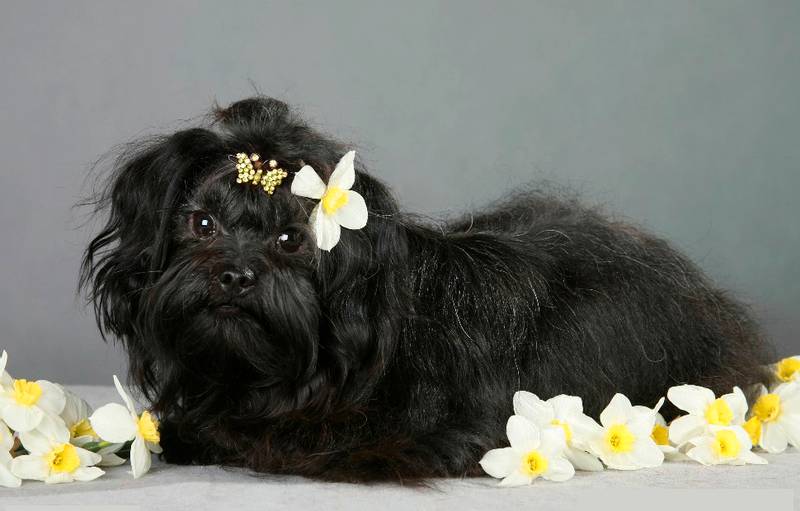
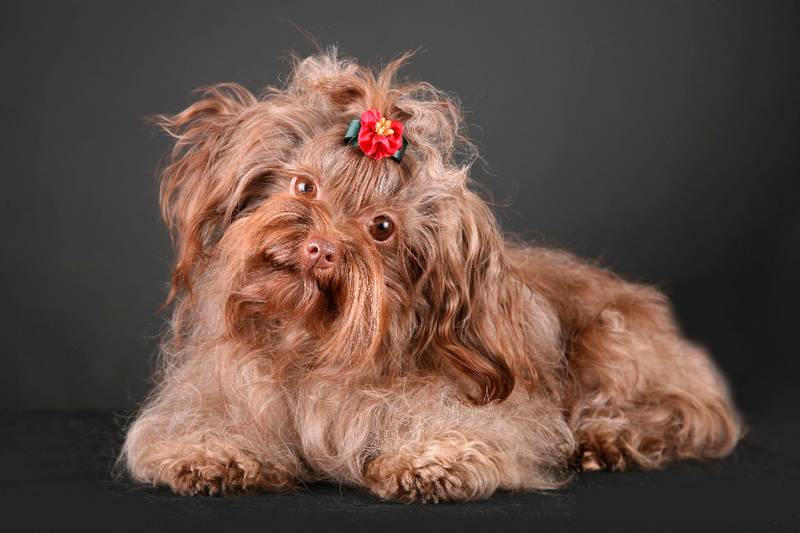
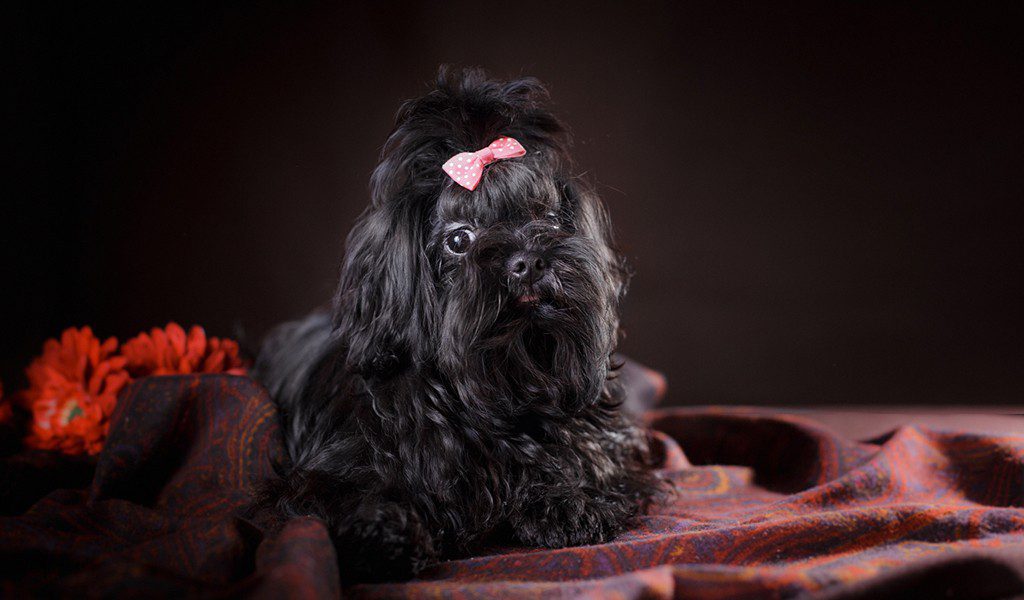
The Russian Tsvetnaya Bolonka is an affectionate and utterly good-natured creature that adores the company of its owner, and indeed any person in principle. The mild-mannered and incapable of pumping the rights of the flower can be safely reckoned among that unique variety of pets in which the competitive instinct sleeps soundly. According to breed breeders, even an inexperienced owner who has never raised animals before can manage this curly egoza. If you are not ready to take responsibility for a recalcitrant personality dog, the Russian Tsvetnaya is 100% your pet.
History of the Russian Tsvetnaya Bolonka breed
The clan of Russian colored lapdogs began to form in Leningrad, after the end of the Great Patriotic War. If, after the revolution, decorative breeds aroused dislike among Soviet breeders, as a living reminder of the hated aristocracy, then by the middle of the 20th century, pre-war stereotypes had lost their relevance. In addition, the interest of Leningraders in miniature dogs had a practical orientation. At that time, most Soviet citizens lived in communal apartments and the memories of the blockade were still fresh. And small pets fit perfectly into the conditions of limited space, besides, it was easier to feed them than, for example, a shepherd or a dog.
The Leningrad breeders introduced the first pair of colored lapdogs in 1951. These were individuals of black and brown colors. Formally, it is believed that the ancestors of the RCB were decorative mestizo dogs, which were brought to Leningrad from all the expanses of the Soviet Union, and then crossed with each other. According to dog breeders of that time, Russian colored lapdogs managed to combine the genes of such breeds as Shih Tzu , Lhasa Apso , Maltese . As for the standard of appearance, it was approved for colored flowers in 1966, although registration of litters in studbooks was carried out back in the late 50s.
Until the beginning of the 70s of the XX century, the main livestock of the breed lived in Leningrad, and only a few Moscow breeders could boast of keeping a Russian colored lapdog. In the 90s, the former and the current capital changed places: while in St. Petersburg the demand for decorative fluffies fell, they were at the peak of popularity among Muscovites. Taking advantage of the newly flared fashion for mini-pets, Moscow enthusiasts immediately opened several large RCB nurseries, from which more than one generation of healthy and spectacular lapdogs came out.
In 1999, the National Club of Russian colored lapdogs began its work at the RKF. And on the eve of the new millennium, dog breeders of the Northern capital again remembered the breed. The result of this interest was the registration in St. Petersburg of large monobreed nurseries, puppies from which were sold not only to domestic buyers, but also abroad. So, for example, in the late 1990s RZB began to “emigrate” to the USA, Canada, Norway, Sweden and Finland.
Video: Russian Tsvetnaya Bolonka
Breed Standard Russian Tsvetnaya Bolonka
The exterior of the representatives of the breed is emphatically pretty. Glamorous curly “fur coats”, rounded cherry eyes and a compact, slightly stretched body – all together this forms a unique type of fashion pet. The optimal height of today’s Russian colored lapdog is 26 cm. Moreover, this figure is desirable for both females and males, although earlier standards indicated sexual dimorphism as a mandatory requirement for the exterior.
Deviations from the growth rate are permissible, but no more than a couple of centimeters – “gullivers” and “dwarfs” in nurseries are not allowed for breeding. An exemplary color flower weighs 3-4 kg. As for the coat, the requirements for it have also changed. If Soviet lapdogs were required to have exclusively curly hair, then for modern individuals, a wavy hair structure has become an acceptable option.
Head
The cranium is convex, slightly rounded, with embossed apple cheekbones, non-protruding superciliary arches and the same occipital protrusion (mound). Short type stop, easy to identify. The muzzles of Russian colored lapdogs are short, dry, with even backs. The base of the muzzle is rather wide, the tip is slightly narrowed.
Russian Tsvetnaya Bolonka Teeth, lips and jaws
Representatives of the breed have wide jaws, forming a scissors bite in the bow, instead of which a tight undershot bite and a pincer-like (straight) bite are also allowed. Ideal indicators of the health of the teeth are their white color, as well as their dense arrangement in a row. The lack of fangs or incisors in the jaw is a serious defect in the exterior. The neat thin lips of the animal are pigmented in black or in the tone of the suit.
Nose
With a fairly miniature earlobe, the dog’s nostrils are large and wide open. The skin of the nose may be dyed to match the coat or anthracite black.
Eyes
The almost round eyes of Russian colored lapdogs are complemented by a straight set and a dark iris. If the coat of the animal is brown, a slight lightening of the color of the eyes is allowed. Dense dry skin of the eyelids is pigmented in jet black or any other shade in accordance with the suit. The look of the breed is touchingly friendly, radiating positive.
Ears
The shape of the lapdog’s ears is triangular, with a smoothed miniature tip. The characteristic position of the ear is hanging down on the cartilage with a moderately high landing.
Neck
The neck, characterized by a high set, is moderately muscled, has dryish contours and an average length.
Frame
Russian colored lapdogs are compact dogs, but with a fairly wide body. The back of the animal gives the impression of a flat, elongated and muscular, while a slight slope of the topline is noticeable on the segment between the withers and the root of the tail. The convex short loin ends with a croup part, which is characterized by moderate sloping and rounded contours. The chest, which has the shape of a regular oval, is of good length and descended almost to the elbows. RZB’s belly is not tucked up too high.
limbs
The main features of the legs of the Russian colored lapdog are parallelism to each other and a relatively wide set. The oblique shoulder blades are the same length as the humerus, creating an articulation angle of 100-110°. The straight forearms are kept level, the contours of the wrists fit into the vertical formed by the skeleton of the forearms.
The hips of the representatives of the breed are not very long, but with sufficiently prominent muscles. The angles of the knee joints are normally expressed, the shins are of normal, not excessive length. The hocks are strong, of a rather dry type, with clear angulations. Short metatarsus in the rack are fixed in a vertical position. The Bolonka moves in a free, energetic trot.
Tail
Laid on the back or rolled into a ring and thrown over the croup, the tail is pubescent with abundant hair. A prerequisite is that the tip of the tail is always in contact with the body of the dog.
Wool
All individuals have wavy or large curled hair. The hair is long, evenly distributed over the body, with little or enough undercoat. Abundant decorative hair grows on the forehead. Russian colored lapdogs are not sheared or trimmed. Hair shortening is possible only in certain parts of the body for hygienic purposes.
Russian Tsvetnaya Bolonka Coat colors
Representatives of the breed can have any color, with the exception of white, marble and spotted colors. At the same time, subtle white marks on the throat, chest, chin and fingertips are acceptable.
Disqualifying defects in appearance and behavior
- Unreasonable shyness and aggressiveness.
- Missing adorning hair on forehead.
- Heterochromia of the iris, blue eyes.
- Crooked jaw, undershot bite.
- Loosely covered lips, visible incisors and fangs.
- Non-standard type of coat color.
- Height over 28 cm.
- Dwarf sizes.
- bobtail.
The nature of the Russian colored lapdog
Russian colored lapdogs are tiny keepers of the master’s secrets and affectionate companions, ready to share any leisure time with a person, except for extreme sports. Funny in appearance and in fact, dogs are able to become pocket psychotherapists in cases where a background presence in the apartment of a living creature is necessary. In addition, floweries are simply crazy about hugs and gentle squeezing, which they regard as well-deserved encouragement. Take a closer look at this breed if you are looking for a contact pet who will be in a state of permanent euphoria from your stroking and scratching behind the ear.
The breed was initially assigned the image of an order of spoiled and passive couch dogs. In fact, Russian colored lapdogs are not at all lazy and are ready to “clean” the house for hours, carrying your socks and slippers to the most unexpected places. On a walk, these tiny curls also do not waste time, trying to establish contacts with small and large relatives, as well as building small adventures to bring any rodents to a stressful state. By their nature, lapdogs are non-conflict creatures, but exactly as long as someone does not encroach on their property and the contents of the bowl. As soon as the cup of patience is overflowing, the four-legged darling begins to come out with amusing barking, in the most critical situations using his teeth.
Despite the official status of a companion breed, the flower beds are absolutely unobtrusive. These shaggy assistants will willingly get involved in the process of preparing dinner by the owner, but will leave the kitchen without any tantrums as soon as the owner makes it clear that he does not need anyone’s services. In addition, Russian colored lapdogs will surely gain confidence in your guests and acquaintances, if only because they will not scan them with a suspicious look and try to bite on the heel. Animals willingly go “on the hands” of almost everyone who is part of the family, thus acquiring their own army of fans.
Discouragement, depression, frustration are concepts that the RZB has never encountered. By default, this breed is charged with positive and fun, which it generously shares with others. Relations with the children of the lapdog also build friendly. Even if the kids do not behave quite correctly in relation to the dog, biting their fingers with a disgruntled pet does not threaten them. Animals do not suffer from the vindictiveness inherent in some decorative breeds. In addition, Russian colored lapdogs easily get along with large dogs. True, the point here is not so much in the peacefulness of flower beds, but in their dimensions. Small “tails” are not perceived by wolfhounds and boerboels as something competitive, so there is no serious friction between representatives of different weight categories.
Education and training
Due to their amusing appearance and compact size, Russian colored lapdogs give the impression of harmless pets that you don’t have to deal with. However, learning the basics is indispensable, even in the case of such goodies as tsvetnushki. And the point here is not only that, not knowing how to control the behavior of the dog, you take a big risk on every walk. An ill-mannered “tail” will come up with a way to annoy you without even leaving the apartment, so do not be lazy to introduce discipline and etiquette to the animal.
Breed training is based on the classical principle: first adaptation and socialization, then education and the final stage – the actual training. An important component of the process is the establishment of the boundaries of what is permitted and the system of prohibitions. Here everything is exactly the same as in the case of large breeds. If you don’t want your pet to roll over on your bed after a walk, then don’t let him do it the rest of the time. If you don’t want to bring up a beggar who begs for delicious pieces from the table, don’t throw tasty treats to him during lunch. The main commands, with the help of which it is convenient to control the behavior of the RCB, are “Fu!”, “No!”, “Come!”, “Place!”, “Walk”.
Puppies of the Russian colored lapdog begin to give out at two months. This is the optimal age period to help the baby rebuild for a further independent life. It is necessary to adapt to a new habitat smoothly and not only within the owner’s housing, therefore, as soon as the animal has received vaccinations appropriate for its age and has spent time in quarantine, it must be taken outside. However, it is better to carry out the first walks in quiet, calm places, and postpone trips along the avenues and shops until the time when the dog gets used to new sounds and smells for her.
The initial training of puppies of Russian colored lapdogs is recommended to be carried out as early as three months. If you bought an older animal, this is not a problem – up to six months, the breed absorbs new knowledge quickly and easily. Acquaintance with a leash and a collar also begins at the age of three months. Don’t forget that the first use of “delimiters” should be short. You should not turn the first exit on a leash into a half-hour tour of the neighborhood.
Punishments in the case of Russian colored lapdogs do not work for several reasons, the main of which is the psychological characteristics of the breed, forcing them to regard harsh penalties as an attempt to suppress their will. Therefore, if the ward does something awkward, do not shout or wave. Better try to switch the dog’s attention to another action or object – in the case of puppies and young individuals, this method works flawlessly.
Sometimes a light slap with a newspaper on the sirloins of the dog is allowed, but such a “light execution” is used in special cases. For example, when a Russian colored lapdog is aware of how to use the tray, but for unknown reasons continues to make puddles on a chair or bed. For the rest, in the training of flower beds, it is more expedient to rely on “gingerbread” methods – the breed has its own food addictions, for the satisfaction of which its representatives will turn mountains. It’s also better not to overdo it with prohibitive commands: the requirement “No!” should not be used more than 3-4 times a day, otherwise there is a risk of growing a frightened and dependent creature out of a lapdog.
Maintenance and care of Russian Tsvetnaya Bolonka
The most difficult thing in keeping decorative breeds is creating a comfortable and safe living environment for its representatives within a single apartment. Small and inquisitive lapdogs will not miss the opportunity to explore the trash can, crush last year’s cookies that have fallen behind the sofa and chew on the leaves of your ficus. Therefore, when bringing a puppy into the house, try to block his access to dangerous locations: hide the wires of household appliances – this is a temporary measure, when the baby grows up, he will no longer be interested in them, remove expensive shoes and houseplants higher.
Never let Russian colored lapdogs out onto an open balcony, from which they can “fly away” after a fluttering butterfly or fly. Jumping from sofas and armchairs is also better not to encourage. This is especially true for puppies that have not yet formed the backbone and joints. Do not forget to carefully monitor the cleanliness of the tray. RZBs are smart dogs who quickly learn the science of using an indoor toilet, but they do not like to walk in wet, bad-smelling litter.
Hygiene
With an emphasized glamorous image, Russian colored lapdogs do not belong to the type of pets, near which you will have to constantly fuss with a comb and scissors. The dense curly hair of the breed has the peculiarity of self-cleaning, so it is better to wash it when a practical need arises. For example, if an animal was doused with water from a puddle by a car passing by. It is not necessary to use conditioning compounds if you do not have a show pet. Instead, it is better to rinse the wool with herbal decoction – nettle or chamomile.
It is recommended to dry the washed Russian colored lapdog with a towel, without a hair dryer. If the drying gadget is still used, do not increase its negative effect by combing at the same time. First “blow” on the dog with warm air, and then comb through completely dry hair. The simultaneous use of a hair dryer and a comb during the drying process leads to the formation of so-called partings on the coat, which the breed should not have.
Unlike french lapdogs and maltese , cauliflowers have a denser and silkier coat structure, which is a huge plus – the breed’s hair almost does not tangle and is resistant to matting. Of course, it is necessary to comb the Russian colored lapdog, but it is not necessary to do it daily – a couple of times a week is enough. It is also undesirable to work through the dog’s hair with metal combs. The ideal tool for this procedure is a bone/plastic comb with sparse teeth.
Haircut RCB is contraindicated, but abundant hair between the toes and near the anus is better to cut. In addition, in winter, after walking, the paw pads should not only be washed with warm water, but also nourished with creams that minimize the destructive effect of reagents. Inspection of the ear funnels should be done once a week. It is easy to clean the ears of wax with a piece of cloth and hygienic lotions for dogs. In addition, it is important to pluck out the hairs that grow inside the funnel, which prevent the passage of air inside, causing itching.
The eyes of Russian colored lapdogs can “leak”, which is a hereditary feature. But since white-haired individuals are not found among representatives of the breed, streaks on the muzzle are easy to miss. If the decorating hair on the head of the lapdog has reached a length of 8-10 cm, it is advisable to pull it with an elastic band into ponytails so that it does not irritate the mucous membrane of the eyes and does not provoke tear secretions. It is obligatory to treat skin folds near the inner corners of the eyelids – dirt quickly accumulates in them, which, when it comes into contact with the mucous membrane, causes irritation and leakage. The hygiene of these areas can be done with powdered boric acid and a toothbrush, which, like a scraper, cleans excretions and debris from the folds.
Russian Tsvetnaya Bolonka Feeding
Russian colored lapdogs are picky pets with excellent appetite. Accordingly, you can make a natural menu or choose dry food for the breed yourself, without seeking the advice of a specialist. Most healthy individuals dashingly sweep everything that gets into their bowl. A special passion of the breed is hard cheese, so if the four-legged ward excelled in some difficult business, reward him with a slice of cheese – delight and contented rumbling are provided.
As for “drying”, it is important to rely on the naturalness of the ingredients (super premium, holistic classes). You can close your eyes to the presence of dyes in the composition: flower beds are not snow-white bichons and coloring from food does not threaten them. The daily diet of healthy lapdogs includes products useful for any dog: lean meat, filleted sea fish, offal. With special care, animals are given chicken, which can provoke allergies.
Buckwheat and rice porridge will help to supplement and slightly diversify the diet of cauliflowers. The main thing is not to forget that the basis of nutrition should be animal protein, not cereals. Vegetables, herbs and fruits are also not prohibited. In addition, once or twice a week, the RCB should be pampered with a quail egg, low-fat kefir or fermented baked milk (better than farm production). It is unacceptable to feed the animal with pickles, smoked meats, delicacies from the master’s table, sweets, pastries. There is also a taboo on onions, potatoes, legumes, garlic.
The period of intensive growth of Russian colored lapdogs is from 2 to 4 months. At this time, the puppy should be fed at least five times a day. At 5 months, the frequency of feeding can be reduced to three or four times a day, but you will additionally have to enrich the animal’s menu with calcium-containing products – cottage cheese, kefir, etc. During this period, babies change milk teeth, so the body needs outside support. Another important aspect of natural nutrition is industrially produced vitamins and minerals. Periodically, they will have to be bought, because not all nutrients from food are absorbed by the dog’s body in full.
Health and disease of Russian colored lapdogs
Paradoxically, but baby lapdogs are creatures with a strong immune system and good health. There are not so many genetically determined ailments in the breed, and most of them were inherited by the colorists from their ancestors – the Havana. Diseases that can pass to animals from distant relatives:
- cataract;
- prolapse of the gland of the third century;
- excessive lacrimation;
- dislocation of the patella;
- hip dysplasia;
- Perthes disease;
- cardiomyopathy;
- hypothyroidism;
- epilepsy;
- allergy;
- deafness;
- skin diseases (hyperkeratosis, adenoma of the sebaceous glands).
Do not panic and try to look for all of the listed health problems in your pet. Each dog inherits a unique set of genes and does not always get the “bonus” of bichon disease. The best way to protect yourself from acquiring a defective puppy is to choose an interested breeder who has gained sufficient experience and carefully approaches the selection of breeding individuals. The importance of tests for genetic diseases has not been canceled either, so always find out the results of a medical examination of her parents before buying a dog.
How to choose a puppy
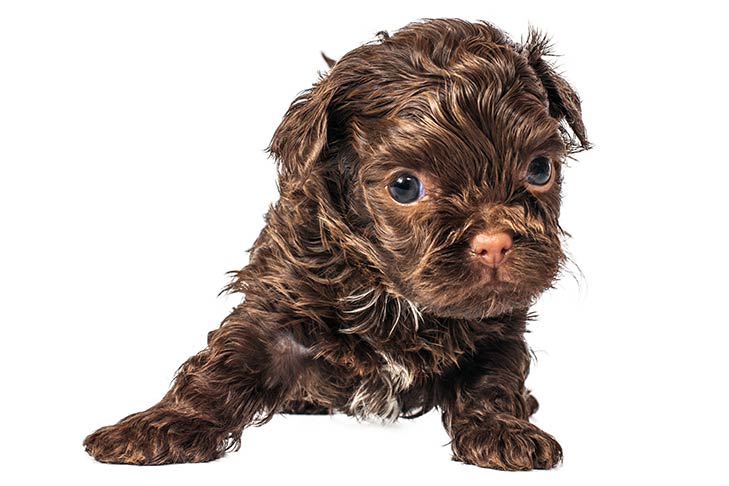

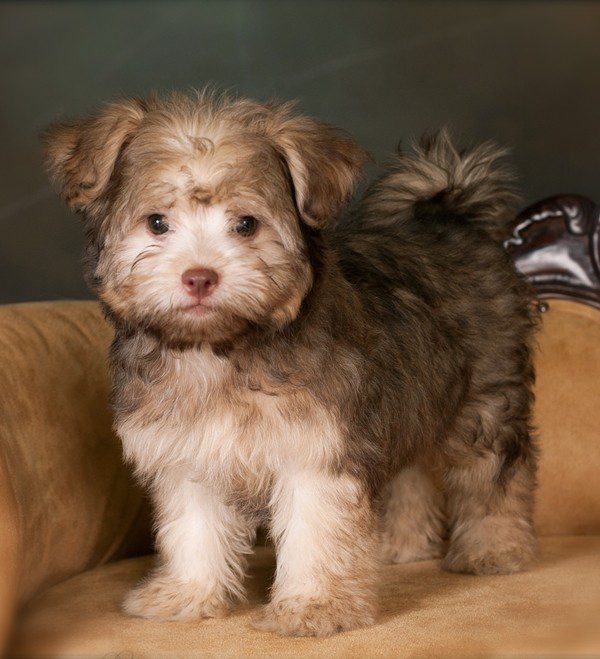

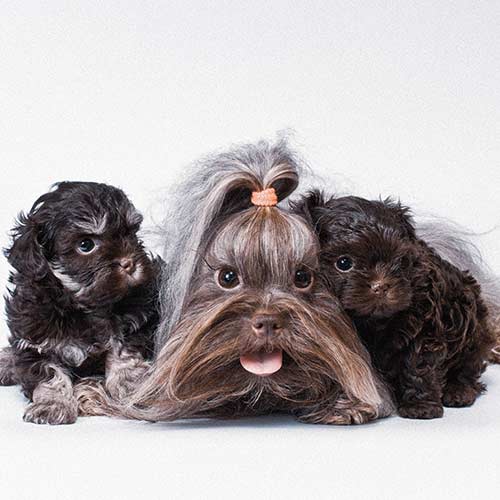

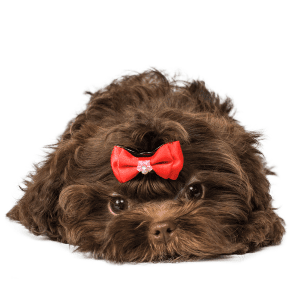

- Responsibly treat the choice of the seller. It’s great if it will be a monobreed cattery with a long history and exhibition diplomas of producers, and not an unknown office registered “yesterday”.
- When choosing a RZB puppy of a particular color, be prepared for the fact that with age the animal may overcolor – this most often happens when the dog’s coat becomes very long.
- Russian colored lapdogs of zoned, as well as red and black-and-black colors can have contrasting masks on their muzzles. This is not a defect, but if you don’t like this feature, keep in mind that as the baby grows up and the adorning hair grows on his head, the mask becomes practically invisible.
- Evaluate the condition of the tail: if it is not thrown on the back in puppyhood, then it will not change its position in an adult lap dog.
- Do not buy Russian colored lapdogs of extremely miniature dimensions if you are planning trips to exhibitions and mating a pet. Dwarf individuals are just fashion victims that do not fit into the breed standard and do not have the right to be exhibited in the rings.
The price of the Russian colored lapdog
The cost of a flowered puppy is influenced by the class of the animal, the pedigree and the uniqueness of the color. An average baby with a RKF metric, without visible defects in the exterior, will cost around 400-500$. Individuals with a rare shade of wool are much more expensive – approximately 1000-1300$.





